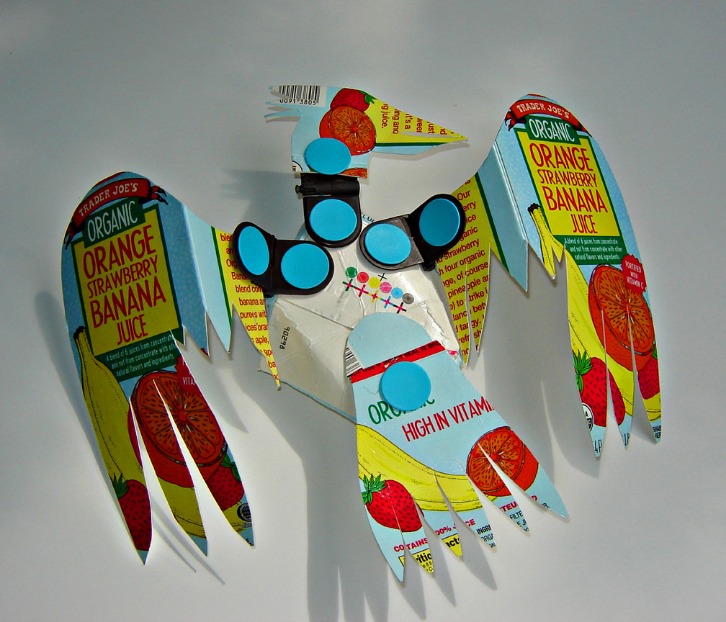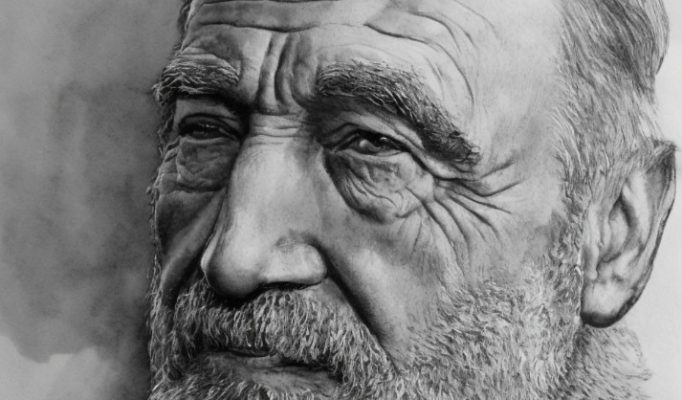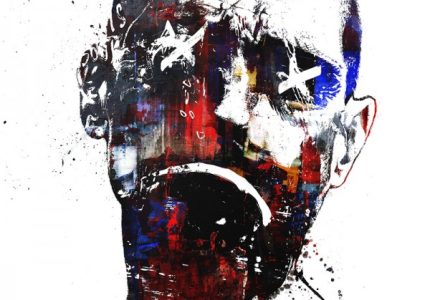Overview of AI in Graphic Design
Artificial Intelligence (AI) is transforming the landscape of graphic design by enhancing creativity, streamlining workflows, and unlocking new possibilities for designers. With advanced algorithms and machine learning, AI tools can generate visual content, optimize design processes, and offer innovative solutions that were previously unimaginable. As AI continues to evolve, its integration into graphic design is revolutionizing how designers approach their craft, making it more efficient and imaginative.
Definition and Scope
Artificial Intelligence (AI) in graphic design refers to the use of advanced algorithms and machine learning techniques to assist, enhance, and automate various aspects of the design process. It encompasses tools and applications that help designers create visuals more efficiently and innovatively. The scope of AI in graphic design includes tasks such as image editing, logo creation, layout generation, color palette suggestions, and personalized design recommendations.
AI-driven graphic design tools analyze large datasets to generate creative options, optimize workflows, and improve overall productivity. As the technology evolves, AI is becoming an integral part of the design industry, enabling both professionals and amateurs to produce high-quality visuals with less effort and time. The ongoing development of AI capabilities promises to expand its role, making graphic design more accessible and creatively dynamic.
Historical Development
Artificial Intelligence has significantly transformed the field of graphic design, offering innovative tools and techniques that enhance creativity, efficiency, and precision. Over the years, AI has evolved from simple automation to sophisticated algorithms capable of generating complex visual content.
- Early developments in AI for graphic design focused on basic automation, such as pattern recognition and simple image editing tools.
- In the 2000s, the introduction of machine learning algorithms enabled more adaptive and intelligent design processes.
- Recent advancements have seen AI-powered design platforms that can generate logos, resize images, and even create entire compositions autonomously.
- The integration of deep learning models, like neural networks, has allowed for highly realistic and creative visual outputs, pushing the boundaries of traditional design.
- Today, AI tools are used for personalized content creation, rapid prototyping, and enhancing user experience in graphic design workflows.
Current Trends
Artificial Intelligence has become a transformative force in the field of graphic design, revolutionizing traditional workflows and expanding creative possibilities. AI-powered tools enable designers to automate repetitive tasks, generate innovative ideas, and enhance visual aesthetics with greater efficiency and precision.
Current trends in AI-driven graphic design include the use of generative adversarial networks (GANs) to create unique visuals and artwork, AI-assisted layout and typography customization, and the deployment of machine learning algorithms to analyze and predict design popularity. Additionally, AI is increasingly integrated into software platforms, providing smart suggestions, real-time editing, and personalized design options.
Furthermore, AI-driven image recognition and editing facilitate quick modifications, while automated branding and logo creation tools are helping startups and entrepreneurs establish visual identities swiftly. As AI continues to evolve, its role in graphic design is expected to grow, fostering more innovative, inclusive, and efficient creative processes across the industry.
Key Technologies Powering AI-Driven Graphic Design
Advancements in artificial intelligence have revolutionized the field of graphic design, introducing a new era of creativity and efficiency. Cutting-edge technologies such as machine learning algorithms, neural networks, and computer vision are at the core of AI-powered design tools. These innovations enable designers to automate repetitive tasks, generate unique visual concepts, and achieve remarkable precision, transforming how visual content is created and optimized.
Machine Learning Algorithms
AI-driven graphic design leverages several advanced technologies that enable автоматизация, creativity, and efficiency in visual content creation. Machine learning algorithms play a central role by analyzing vast amounts of design data to generate unique visuals, optimize layouts, and personalize user experiences. Convolutional neural networks are used for image recognition and style transfer, allowing tools to mimic artistic techniques and create new aesthetic styles. Generative adversarial networks facilitate the development of realistic and innovative designs by pitting two neural networks against each other to produce high-quality images. Natural language processing enables designers to generate design concepts and modify visuals through simple text prompts. Additionally, computer vision techniques assist in assessing visual harmony, balance, and color schemes, ensuring the generated designs meet aesthetic standards. These technologies combined are transforming the landscape of graphic design by making it more accessible, efficient, and creatively expansive.
Neural Networks
Neural networks are the cornerstone of AI-driven graphic design, enabling machines to understand and generate visual content with remarkable accuracy. These advanced algorithms process vast datasets of images to learn patterns, styles, and structures, facilitating the creation of innovative designs. Machine learning frameworks like TensorFlow and PyTorch provide the essential tools for developing and deploying neural networks tailored for graphic design tasks. Generative Adversarial Networks are particularly influential, allowing AI to produce realistic images and artistic variations that enhance creativity and efficiency. Additionally, convolutional neural networks excel at image recognition and editing, supporting tasks such as style transfer, image enhancement, and logo creation. Together, these technologies empower designers with intelligent tools that streamline workflows and inspire new visual possibilities.
Computer Vision
Key technologies powering AI-driven graphic design and computer vision include deep learning, neural networks, convolutional neural networks, generative adversarial networks, and natural language processing. Deep learning techniques enable AI systems to analyze and interpret visual data with high accuracy, facilitating tasks such as image recognition, style transfer, and content generation. Convolutional neural networks are particularly effective in processing visual information, allowing AI to identify objects, textures, and patterns within images. Generative adversarial networks are used to create new, realistic images or modify existing ones, expanding creative possibilities. Natural language processing enables AI to understand and generate textual content, essential for designing interfaces and automating content creation. Together, these technologies drive innovations in graphic design, making creative workflows more efficient, personalized, and innovative.
Generative Adversarial Networks (GANs)
Generative Adversarial Networks (GANs) are revolutionizing AI-driven graphic design by enabling the creation of highly realistic and innovative visual content. GANs consist of two neural networks, a generator and a discriminator, that work in tandem to produce images that are indistinguishable from real artwork. This technology allows designers to generate custom graphics, logos, and even complex scenes efficiently, reducing the time and effort required for traditional design processes.
Another key technology powering AI in graphic design is deep learning, which enables models to understand and interpret visual styles, color schemes, and composition principles. These models can assist designers by offering style transfers, automating repetitive tasks, and providing inspiration based on large datasets of existing artwork.

Computer vision also plays a vital role, allowing AI systems to analyze and recognize visual patterns, ensuring coherence and aesthetic appeal in generated designs. Together, GANs, deep learning, and computer vision form a robust ecosystem that significantly enhances creativity, productivity, and innovation in AI-driven graphic design.

Applications of AI in Graphic Design
Artificial Intelligence has revolutionized the field of graphic design by offering innovative tools and techniques that enhance creativity and efficiency. From automated image editing to intelligent logo generation, AI applications are transforming how designers conceptualize and execute their projects. These advancements enable faster workflows, more personalized designs, and new possibilities for visual storytelling, making AI an indispensable part of modern graphic design processes.
Automated Logo and Icon Creation
Applications of AI in graphic design have revolutionized the industry by enabling more efficient and innovative workflows. One of the key areas is automated logo and icon creation, where AI algorithms analyze brand identity and generate unique visual elements swiftly. These tools allow designers to experiment with numerous concepts, saving time and resources while maintaining high creativity. AI-driven design platforms can also customize logos and icons based on user preferences, ensuring tailored solutions for clients. Overall, AI enhances the creative process, empowering designers to produce high-quality graphics rapidly and with greater versatility.
Image Enhancement and Editing
AI has revolutionized graphic design by offering advanced tools for image enhancement and editing. In graphic design, AI algorithms can automatically optimize images, improve resolution, and correct colors, saving time and effort for designers. AI-powered editing tools enable seamless background removal, object manipulation, and style transfers, allowing for more creative flexibility. Additionally, AI can generate custom design elements and layouts based on user preferences, streamlining the creative process. These applications not only increase efficiency but also open new possibilities for innovation and originality in graphic design projects.
Personalized Content Generation
Artificial Intelligence has revolutionized graphic design by enabling more efficient and innovative workflows. AI-powered tools can automatically generate layouts, select color schemes, and even create entire visual assets, significantly reducing the time required for design processes. Personalized content generation is another key application, where AI algorithms analyze user preferences and behavior to produce tailored visuals and marketing materials that resonate with target audiences. This fusion of AI and graphic design not only enhances creativity but also allows designers to focus on higher-level conceptual work while automating repetitive tasks.
Layout and Composition Optimization
AI has revolutionized graphic design by providing advanced tools that enhance creativity and efficiency. In layout and composition optimization, AI algorithms analyze design elements to suggest the most balanced and visually appealing arrangements. This helps designers create harmonious compositions that attract viewers and communicate messages effectively. AI-powered applications can automatically generate multiple layout options, allowing designers to choose the best one or refine their ideas more swiftly. Additionally, AI can predict emerging design trends and adapt suggestions accordingly, ensuring projects stay current and engaging. Overall, AI-driven tools empower graphic designers to produce high-quality work faster, enabling more innovative and dynamic visual content.
Benefits of Incorporating AI in Graphic Design
Integrating AI into graphic design offers numerous advantages that enhance creativity and efficiency. By leveraging artificial intelligence, designers can streamline their workflows, generate innovative ideas, and deliver high-quality visuals more rapidly. This synergy between technology and artistry not only improves productivity but also opens up new possibilities for unique and compelling design solutions.
Increased Efficiency and Speed
Incorporating AI into graphic design significantly enhances efficiency and speed, enabling designers to produce high-quality work more rapidly and with less effort.
- Automates repetitive tasks such as resizing, format changes, and color adjustments, saving valuable time for creative efforts.
- Provides intelligent suggestions and auto-generation of design elements, accelerating the creative process.
- Allows for quick iteration and modification of designs, facilitating faster experimentation and refinement.
- Streamlines collaboration through AI-powered tools that facilitate feedback and version control.
- Enables access to vast design templates and resources, reducing start-up time and increasing productivity.
Enhanced Creativity and Innovation
Incorporating AI into graphic design significantly boosts creativity and innovation by providing designers with advanced tools for idea generation, visualization, and iterative testing. AI-powered software can analyze trends, suggest unique concepts, and create dynamic visuals that might be difficult to conceive manually, thereby expanding the creative possibilities for designers. Additionally, AI accelerates the design process, allowing for rapid prototyping and experimentation, which fosters an environment of continuous innovation. By automating repetitive tasks, designers can focus more on conceptual development and artistic expression, ultimately leading to more original and impactful designs.
Cost Reduction
Incorporating AI into graphic design offers significant cost reduction benefits by streamlining workflows and automating repetitive tasks. AI-powered tools can quickly generate multiple design variations, reducing the need for extensive manual effort and saving valuable time. This efficiency allows design teams to allocate resources more effectively, minimizing labor costs while maintaining high-quality output. Additionally, AI can assist in sourcing and customizing assets, further reducing expenses associated with hiring additional staff or external contractors. Overall, integrating AI into graphic design results in more cost-effective projects without compromising creativity or quality.
Improved Customization and User Engagement
Incorporating AI into graphic design significantly enhances the level of customization and user engagement, transforming the creative process and delivering more personalized experiences. AI-driven tools enable designers to tailor visuals more precisely to target audiences, ensuring that designs resonate better and communicate more effectively.
- AI allows for rapid generation of multiple design options based on user preferences, making customization faster and more diverse.
- Personalized graphics created with AI can adapt in real-time to user interactions, increasing engagement and satisfaction.
- Advanced AI algorithms analyze user data to suggest design improvements, ensuring the final product aligns with user expectations.
- Automated design adjustments powered by AI help create a more interactive and dynamic user experience.
- Enhanced customization fosters stronger emotional connections between the brand and its audience, boosting loyalty and engagement.
Challenges and Limitations
In the rapidly evolving field of graphic design AI, professionals often face various challenges and limitations that can impact creativity and efficiency. While artificial intelligence offers innovative tools and solutions, it also presents hurdles related to technological complexity, ethical considerations, and the preservation of artistic uniqueness. Understanding these challenges is essential for harnessing AI’s full potential in transforming graphic design practices.
Quality Control and Accuracy
In the realm of graphic design AI, challenges and limitations often arise from the technology’s evolving nature, including the potential for inaccuracies and lack of human nuance. Quality control can be difficult as AI-generated designs may vary in consistency and creativity, sometimes resulting in outputs that do not meet aesthetic or functional standards. Ensuring accuracy is essential, as AI systems might misinterpret prompts or produce images with unintended elements, requiring thorough oversight and editing by experienced designers. Additionally, reliance on AI tools can lead to concerns about originality and intellectual property rights, further complicating quality assurance processes. Addressing these challenges involves continuous refinement of algorithms, implementing rigorous review protocols, and maintaining a balance between automated efficiency and human oversight to achieve optimal design outcomes.
Ethical and Copyright Concerns
In the realm of graphic design AI, several challenges and limitations emerge that hinder its seamless integration and effectiveness. One primary concern is the accuracy and quality of AI-generated designs, which can sometimes lack the nuanced creativity and human touch essential in graphic artistry. Additionally, AI tools often require substantial computational resources and technical expertise, posing barriers for small businesses or individual designers. Ethical considerations also arise regarding the reliance on AI for creative processes, including the potential reduction of employment opportunities for human designers and issues surrounding authorship and originality.
Copyright concerns are particularly significant in graphic design AI, as the use of existing copyrighted materials to train models can lead to infringement issues. There is an ongoing debate over who owns the rights to AI-generated designs—the developer, the user, or the AI itself—complicating legal protections. Furthermore, biases embedded in training data can result in stereotypical or culturally insensitive outputs, raising ethical questions about diversity and representation. Overall, while AI offers valuable tools for graphic designers, careful attention to these challenges and limitations is crucial to ensure responsible and fair use in the industry.
Dependence on Data Quality
Dependence on data quality is a significant challenge in utilizing AI for graphic design, as the effectiveness of AI tools heavily relies on the quality and diversity of the training data. Poorly curated or biased datasets can lead to subpar or inappropriate design outputs, limiting creativity and originality. Additionally, limitations in data can cause AI models to generate repetitive or generic designs, reducing the uniqueness that is essential in effective graphic communication.
Creative Limitations
In the realm of graphic design AI, creative limitations pose significant challenges that can impact the quality and originality of generated designs. These systems often rely on existing data, which may restrict their ability to produce truly innovative or unique concepts, leading to repetitive outputs. Additionally, AI may struggle with understanding nuanced artistic styles, cultural significance, or emotional expression, resulting in designs that lack depth or context. As a result, human creativity remains essential to infuse designs with originality and cultural relevance. Furthermore, AI algorithms might have difficulty interpreting complex design briefs or adapting to rapidly changing trends, limiting their effectiveness in dynamic creative environments. Overall, while AI can enhance efficiency, its creative limitations highlight the importance of human oversight and artistic intuition in graphic design.
Future Trends in AI-Driven Graphic Design
Artificial intelligence is revolutionizing the landscape of graphic design, opening new horizons for creativity and efficiency. Future trends in AI-driven graphic design promise to empower designers with advanced tools that foster innovation, personalization, and automation. As AI technologies continue to evolve, they are poised to redefine how visual content is created, customized, and optimized for a dynamic digital world.
Integration of Real-Time AI Tools
Future trends in AI-driven graphic design are poised to revolutionize the industry by enabling more dynamic, personalized, and efficient creative processes. Integration of real-time AI tools will allow designers to instantly generate, modify, and experiment with visual concepts, significantly reducing development time and enhancing creative flexibility. As AI continues to advance, we can expect smarter algorithms capable of understanding contextual nuances and aesthetic preferences, leading to more intuitive design assistance. Additionally, real-time feedback from AI systems will facilitate an iterative design process, fostering innovative ideas and allowing for rapid refinement. The synergy between human creativity and AI automation will open new horizons for customized branding, immersive visuals, and interactive media, shaping the future landscape of graphic design.
Advancements in Generative Models
Future trends in AI-driven graphic design are set to revolutionize the creative landscape through increasingly sophisticated generative models. Advancements in generative models, such as improved neural networks and deep learning techniques, enable the automatic creation of highly customized and complex visual content. These technologies facilitate rapid prototyping, personalized designs, and dynamic visualizations, empowering designers to explore new ideas and iterate more efficiently. As generative AI continues to evolve, it is expected to integrate seamlessly with traditional design tools, augmenting human creativity rather than replacing it. This synergy will lead to more innovative, accessible, and diverse design solutions, marking a new era of intelligent, adaptive graphic design.
Customization and Personalization at Scale
Future trends in AI-driven graphic design are poised to revolutionize the industry by enabling unprecedented levels of customization and personalization at scale. Advancements in machine learning algorithms will allow designers to create highly tailored visuals that resonate deeply with individual audiences, fostering stronger engagement and brand loyalty. AI tools will increasingly offer real-time design adjustments based on user preferences, behavioral data, and contextual factors, making the design process more dynamic and responsive. Furthermore, automation will streamline repetitive tasks, freeing designers to focus on more creative and strategic aspects of their work. As these technologies evolve, we can expect a democratization of high-quality design resources, empowering smaller businesses and independent creators to produce professional-grade visuals effortlessly. Overall, the integration of AI in graphic design will lead to more personalized, efficient, and innovative visual communication tailored to diverse audiences on a global scale.
Collaborative Human-AI Design Processes
Future trends in AI-driven graphic design are poised to revolutionize how creative professionals develop visual content, making the process faster, more innovative, and highly personalized. Advancements in machine learning algorithms will enable AI to generate complex designs based on minimal input, empowering designers to experiment with a broader range of concepts effortlessly. As AI becomes more integrated into design tools, we can expect real-time feedback, adaptive functionalities, and automated adjustments that enhance workflow efficiency. Additionally, the use of generative adversarial networks (GANs) will facilitate the creation of highly realistic and unique visual assets, pushing the boundaries of traditional design possibilities.
Collaborative human-AI design processes will become increasingly prevalent, fostering a synergistic relationship that combines human creativity with AI’s computational power. Designers will leverage AI to handle repetitive tasks, generate initial drafts, or explore multiple design options rapidly, allowing them to focus more on strategic and conceptual aspects. This partnership will lead to more innovative and diverse outputs, as AI tools provide suggestions and insights that might not be immediately apparent to human designers. Furthermore, as collective AI systems evolve, they will enable seamless collaboration across different teams and disciplines, shaping a new era of interdisciplinary and dynamic graphic design practices.





